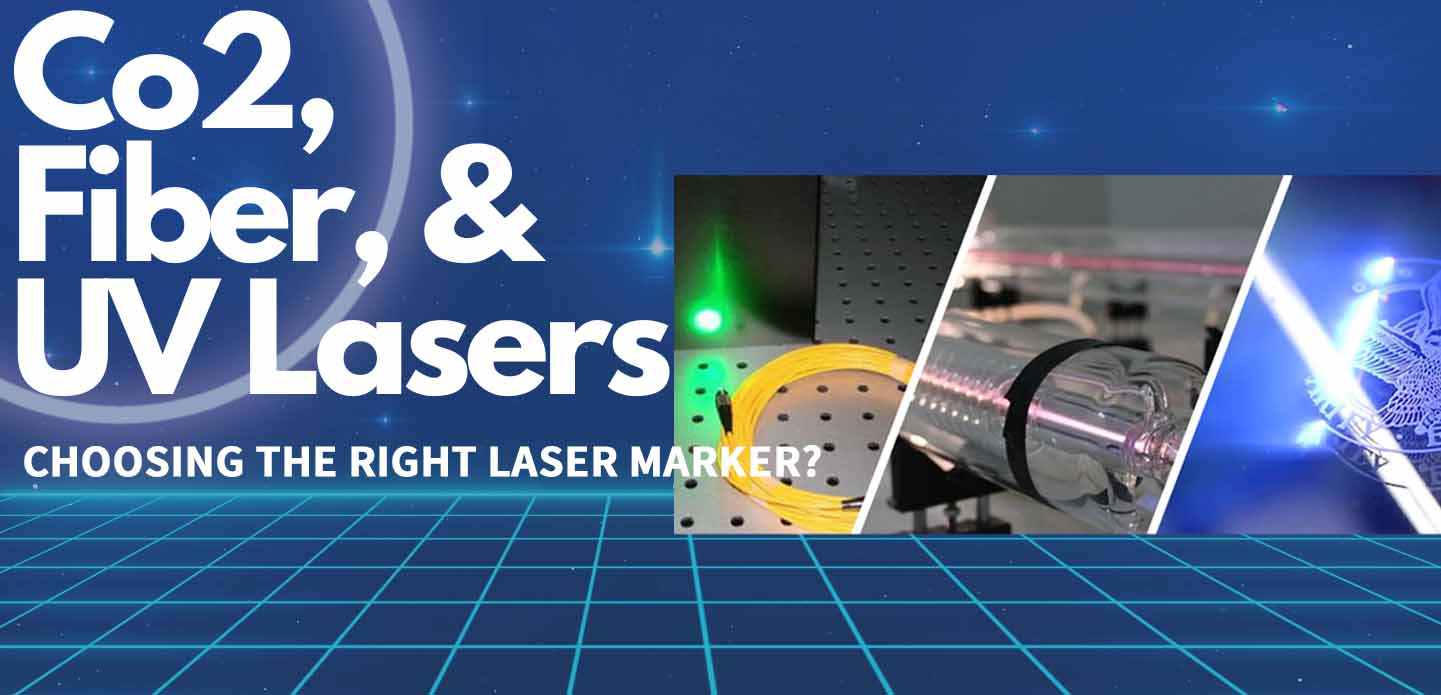Laser marking machines are essential for marking the surfaces of various products, including coloring stainless steel and darkening aluminum. The most common types of laser marking machines are CO2, fiber, and UV lasers. Each type differs significantly in terms of laser source, wavelength, and application areas, making them suitable for specific materials and processes.
Differences Between Fiber, CO2, and UV Laser Marking Machines
1. Laser Source:
Fiber Laser Markers: Use fiber laser sources.
CO2 Laser Markers: Use CO2 gas laser sources.
UV Laser Markers: Use short-wavelength UV laser sources, which generate low heat and are suitable for cold light engraving, unlike the heat-intensive fiber and CO2 lasers.
2. Laser Wavelength:
Fiber Laser Markers: 1064 nm.
CO2 Laser Markers: 10.64 μm.
UV Laser Markers: 355 nm.
3. Application Areas:
CO2 Laser Markers: Ideal for engraving most non-metal materials and some metals.
Fiber Laser Markers: Best for engraving most metals and some non-metals.
UV Laser Markers: Suitable for clear markings on heat-sensitive materials, such as certain plastics.
Detailed Comparison of Each Type
CO2 Laser Marking Machine
Performance Features:
High precision and fast marking with controllable engraving depth.
Powerful laser suitable for engraving and cutting various non-metal products.
Long lifespan (20,000 to 30,000 hours), no consumables, and low processing costs.
Produces clear, wear-resistant markings with fast and efficient engraving.
Operates by vaporizing the material along a predetermined trajectory using a 10.64 μm laser beam.
Low maintenance costs and suitable for high-volume, high-speed industrial production.
Applications:
Ideal for marking paper, leather, fabric, organic glass, epoxy resin, woolen products, plastic, ceramics, crystal, jade, and wood. Commonly used in consumer goods, food packaging, medical packaging, ceramics, clothing accessories, textile cutting, craft gifts, rubber products, furniture, and more.

Fiber Laser Marking Machine
Performance Features:
Compatible with software like Coreldraw, AutoCAD, and Photoshop; supports various font and code types.
Features an integrated structure with automated focus adjustment.
Uses imported isolators to enhance stability and lifespan.
Requires minimal maintenance and is suitable for harsh environments.
Fast processing speed, up to three times faster than traditional marking machines.
High electro-optical conversion efficiency, with low overall power consumption (below 500W).
Superior beam quality, ideal for fine and detailed marking.
Applications:
Suitable for marking metals and various non-metals, including high-hardness alloys, oxides, electroplating, coatings, ABS, epoxy resin, ink, and engineering plastics. Widely used in plastic keys, IC chips, digital components, precision machinery, jewelry, watches, glasses, electronic components, tools, automotive parts, medical equipment, building materials, and more.

UV Laser Marking Machine
Characteristics:
Utilizes a 355 nm UV laser with third-order cavity frequency doubling technology.
Produces a fine focused spot for detailed marking.
Achieves marking by breaking the molecular chain of the material, minimizing mechanical deformation and heat impact.
Considered a cold light engraving process.
Applications:
Ideal for marking and micro-hole drilling in food and pharmaceutical packaging, glass, ceramics, high-speed division of silicon wafers, and complex graphic cutting.

Conclusion
Choosing the right laser marker depends on your specific application requirements:
CO2 Laser Markers: Best for non-metals and some metals.
Fiber Laser Markers: Optimal for metals and some non-metals, offering high precision and speed.
UV Laser Markers: Suitable for heat-sensitive materials and applications requiring fine, detailed work.
由用户整理投稿发布,不代表本站观点及意愿,仅供交流学习之用,如涉及版权等问题,请随时联系我们(yangmei@bjjcz.com),我们将在第一时间给予处理。






